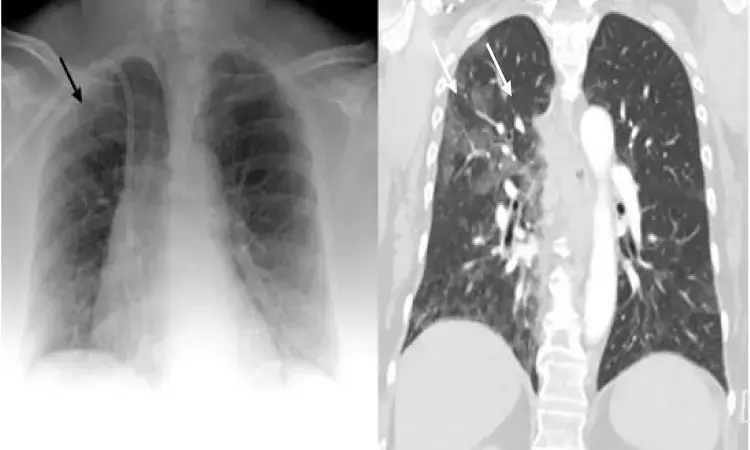- Home
- Medical news & Guidelines
- Anesthesiology
- Cardiology and CTVS
- Critical Care
- Dentistry
- Dermatology
- Diabetes and Endocrinology
- ENT
- Gastroenterology
- Medicine
- Nephrology
- Neurology
- Obstretics-Gynaecology
- Oncology
- Ophthalmology
- Orthopaedics
- Pediatrics-Neonatology
- Psychiatry
- Pulmonology
- Radiology
- Surgery
- Urology
- Laboratory Medicine
- Diet
- Nursing
- Paramedical
- Physiotherapy
- Health news
- Fact Check
- Bone Health Fact Check
- Brain Health Fact Check
- Cancer Related Fact Check
- Child Care Fact Check
- Dental and oral health fact check
- Diabetes and metabolic health fact check
- Diet and Nutrition Fact Check
- Eye and ENT Care Fact Check
- Fitness fact check
- Gut health fact check
- Heart health fact check
- Kidney health fact check
- Medical education fact check
- Men's health fact check
- Respiratory fact check
- Skin and hair care fact check
- Vaccine and Immunization fact check
- Women's health fact check
- AYUSH
- State News
- Andaman and Nicobar Islands
- Andhra Pradesh
- Arunachal Pradesh
- Assam
- Bihar
- Chandigarh
- Chattisgarh
- Dadra and Nagar Haveli
- Daman and Diu
- Delhi
- Goa
- Gujarat
- Haryana
- Himachal Pradesh
- Jammu & Kashmir
- Jharkhand
- Karnataka
- Kerala
- Ladakh
- Lakshadweep
- Madhya Pradesh
- Maharashtra
- Manipur
- Meghalaya
- Mizoram
- Nagaland
- Odisha
- Puducherry
- Punjab
- Rajasthan
- Sikkim
- Tamil Nadu
- Telangana
- Tripura
- Uttar Pradesh
- Uttrakhand
- West Bengal
- Medical Education
- Industry
Projections on radiation dose tied to image quality during chest digital radiography: Study

The radiation dose to superficial organs may be lower with standing posterior-anterior projection than with standing anterior-posterior projection during chest digital radiography, reports a study.
The study is published in the PLOS One Journal.
Hongrong Xu and colleagues from the Department of Radiology, Children's Hospital of Chongqing Medical University, Chongqing, China, investigated the impact of the use of different imaging units and projections on radiation dose and image quality during chest digital radiography (DR) in 3- and 4-year-old children.
The authors included a total of two hundred forty 3- and 4-year-old participants requiring chest digital radiography; they were divided into three groups: supine anterior-posterior projection (APP), standing APP and standing posterior-anterior projection (PAP).
Each group included 40 participants who were evaluated using the same imaging unit. The dose area product (DAP) and the entrance surface dose (ESD) were recorded after each exposure.
The visual grading analysis score (VGAS) was used to evaluate image quality, and the longitudinal distance (LD) from the apex of the right lung to the apex of the right diaphragm was used to evaluate the inspiration extent.
The results showed that dose area product and entrance surface dose were significantly lower in the standing posterior-anterior projection and anterior-posterior projection groups than in the supine anterior-posterior projection group (P<0.05), but longitudinal distance was significantly higher in the standing posterior-anterior projection and anterior-posterior projection groups than in the supine anterior-posterior projection group (P<0.05).
Additionally, the pulmonary field area was significantly higher for the standing posterior-anterior projection group than for the standing and supine anterior-posterior projection groups (P<0.05). The correlations between entrance surface dose, dose area product, and visual grading analysis score were positive (P<0.001), showing that larger entrance surface dose and dose area product correspond to higher visual grading analysis score.
The correlations between entrance surface dose, dose area product, and body mass index (BMI) were also positive (P<0.05), indicating that higher body mass index corresponds to larger entrance surface dose and dose area product.
Finally, no differences in dose area product, entrance surface dose, visual grading analysis score, longitudinal distance, pulmonary field area, or body mass index were noted between males and females (P>0.05).
Hence, the authors concluded that "the radiation dose to superficial organs may be lower with standing posterior-anterior projection than with standing anterior-posterior projection during chest digital radiography. Standing posterior-anterior projection should be selected for chest digital radiography in 3- and 4-year-old children, as it may decrease the required radiation dose."
https://doi.org/10.1371/journal.pone.0255749
Dr. Nandita Mohan is a practicing pediatric dentist with more than 5 years of clinical work experience. Along with this, she is equally interested in keeping herself up to date about the latest developments in the field of medicine and dentistry which is the driving force for her to be in association with Medical Dialogues. She also has her name attached with many publications; both national and international. She has pursued her BDS from Rajiv Gandhi University of Health Sciences, Bangalore and later went to enter her dream specialty (MDS) in the Department of Pedodontics and Preventive Dentistry from Pt. B.D. Sharma University of Health Sciences. Through all the years of experience, her core interest in learning something new has never stopped. She can be contacted at editorial@medicaldialogues.in. Contact no. 011-43720751
Dr Kamal Kant Kohli-MBBS, DTCD- a chest specialist with more than 30 years of practice and a flair for writing clinical articles, Dr Kamal Kant Kohli joined Medical Dialogues as a Chief Editor of Medical News. Besides writing articles, as an editor, he proofreads and verifies all the medical content published on Medical Dialogues including those coming from journals, studies,medical conferences,guidelines etc. Email: drkohli@medicaldialogues.in. Contact no. 011-43720751


